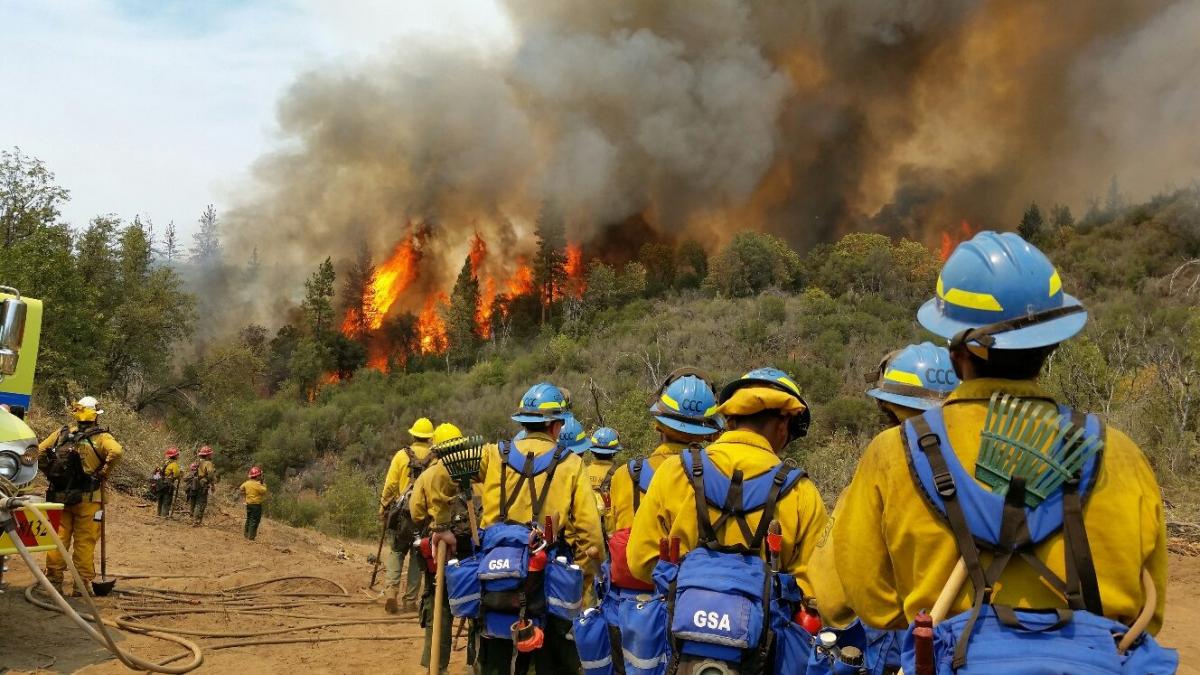

California Conservation Corps
Originally published by Nation of Change – 11/19/15
Wildfires are raging in many states around the U.S. This year, over 8.8 million acres burned by mid-September, nearing the number of acres burned during the same timeframe in 2006, one of the worst wildfire seasons on record. 2015 is poised to meet and even surpass that record.
Fighting wildfires is both difficult and expensive. The U.S. Forest Service alone spent over $1.1 billion on fire suppression in 2014. While federal land management agencies expect to spend a certain percentage of their annual budgets on firefighting, that percentage continues to increase as wildfire seasons grow longer.
Due to the effects of climate change, fire seasons are on average 78 days longer than they were in the ‘70s. In 2015, the Forest Service expects to spend 52 percent of its budget on fire suppression. In comparison, 16 percent of the budget went to fire suppression in 1995. A new report estimates that nearly 70 percent of the Forest Service’s budget will be devoted to fire suppression by 2025. Wildfires are causing more damage than ever before, yet budgets are not keeping pace.
The current funding mechanism for fighting wildfires forces land management agencies to divert funds that otherwise would support routine maintenance and improvement projects as well as preventative measures that reduce wildfire risk. When more than half of the Forest Service’s budget is spent on wildfire suppression, less than half is available for maintaining habitats and the trails, roads, and bridges that make our national forests environmentally healthy and accessible to the public.
There is a clear solution to this problem: make federal disaster funding available for wildfire suppression. Congress included $700 million in the Continuing Resolution to repay the Forest Service for funds that were transferred to firefighting, but the system of repaying the land management agencies on an annual basis is inefficient. Congress can fix this by passing the Wildfire Disaster Funding Act (WDFA): a bi-partisan proposal that would fund wildfire suppression in a similar manner to how the government currently funds the response to hurricanes, tornadoes and other natural disasters.
Passage of the WDFA is now more important than ever as Congress recently failed to act on bipartisan legislation that would reauthorize and fully fund the Land and Water Conservation Fund (LWCF). Since its creation in 1965, LWCF has protected national parks and forests with the royalties from oil and gas drilling, not taxpayer dollars. LWCF helps reduce wildfire fighting costs by protecting water supplies from development and allowing firefighters to manage fire efficiently across public lands.
Further, with the passage of WDFA more of the Forest Service’s budget would be available for routine maintenance and programs like the 21st Century Conservation Service Corps (21CSC): an initiative that engages youth and returning veterans in public lands maintenance projects, including forest thinning and other activities that mitigate the impact of future wildfires. Utilizing the 21CSC would also help provide job training to America’s next generation of land managers.
America’s parks and public lands provide precious natural resources, but Congress is not doing its part to protect and defend our heritage. Congress needs to pass the WDFA to ensure that the U.S. Forest Service has the funding it needs to fight wildfires, and it needs to reauthorize and fully fund the LWCF to ensure that we are able to continue to maintain and protect our natural resources for future generations.


































































